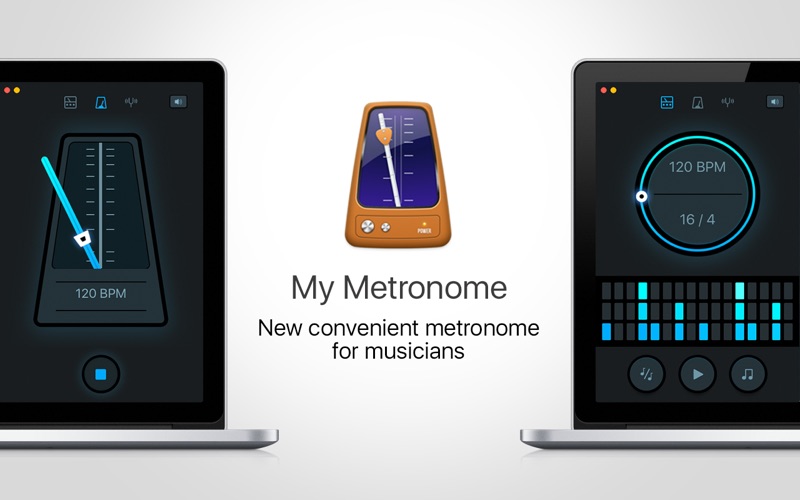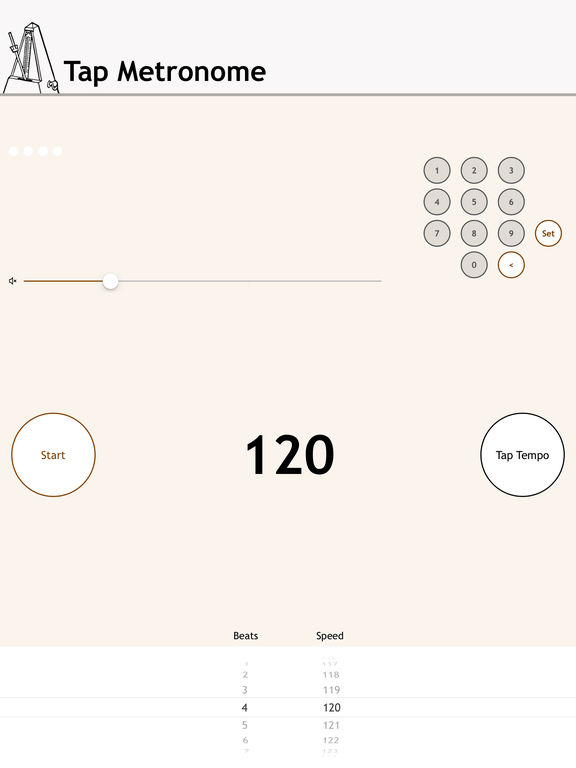
Other users may think it is great, especially if you like to turn your metronome on and off a lot while practicing without unlocking your device. Some may not like this, especially if it drains your battery when you’re not paying attention. The app will stay open with the screen on all the time unless users change this default setting. Available on the phone version only, users can choose between vibrating on accented beats or on every beat. Additionally Tempo is one of only two apps we tested with a haptic vibrate feature. “This would be a good option for someone who prefers more subtle effects,” she says. Pessoa describes the visuals as much less jarring than in some of the other apps. A pendulum, full-screen flash, as well as an option to disable all visuals, are available in settings or by swiping up on the display. The beats display as circles that light up, with several included color schemes to choose from as well as additional color schemes available for purchase. Tempo offers a full-screen display option as well as numerous visual beat options. Additionally, Tempo includes a setlist feature where users can save various tempo, meter, and subdivision settings with the title of their choice. It’s incredibly easy to select the subdivisions, and I love that the app offers an easy way to do both 3+2 and 2+3 subdivisions for 5/8.” Tempo may not offer as many subdivision choices as some of the more complex apps, but there are plenty for everyday use. Evans explains, “Subdivision options are available once you choose your time signature, which I think is a good feature for beginners.” Pessoa adds, “The app’s layout is very helpful in this regard.
METRONOME APP ADS PROFESSIONAL
Minneapolis-based professional harpist Phala Tracy finds that unless the metronome is already clicking when you go into the settings, “there is no way to test each sound before you choose it.”Īll our testers agree Tempo makes it easy to customize clicks for subdivisions of the beat as well as the time signature.

Choosing the sound could be a smoother process. The volume is adjusted by either the slider in the app interface or buttons on the device. Our testers find the volume of the clicks to be loud enough and easily heard while playing. It is also possible to customize each beat within any given meter with three possible sound options: a sound for accented beats, a different sound for unaccented beats, or silent.
METRONOME APP ADS PLUS
Washington D.C.-based professional harpist Nadia Pessoa says, “I liked that there were over a dozen options, with both percussive and digital sounds.” With 15 sounds to choose from, plus two voice counting options, all of our testers found a sound they liked and could hear while playing. In general, our testers agree it is easy to customize the sounds in this app. By default, the Tempo app is silent when users tap to find BPM, but you can change it to audibly click when you tap in settings. The BPM detector seems very accurate when we test it by tapping along with a separate metronome device. In the phone version of Tempo it says “TAP.” The tablet version is less obvious, but users tap in the center of the BPM wheel. This feature also comes in handy when trying to determine the tempi in recorded music. 16, says she has her students tap the beat into a metronome to check the regularity of their pulse. This is a feature other metronome apps often lack, and a useful one if you don’t know the BPM for allegretto off the top of your head.Īs with all the apps we tested, Tempo has a “tap to find the BPM” feature, or as we call it a “BPM detector.” Harp teacher and performer Delaine Fedson Leonard, who weighs in with her expert advice in our “Keeping the Beat” feature on pg. We like how the Tempo app clearly lists the Italian tempo markings in addition to the BPM number. This quick adjust feature was not obvious to some testers, and all of our testers lamented the inability to simply type in the BPM.

On the phone, sliding a finger right or left over the BPM, or using the scroll wheel on the tablet, allows users to make quick adjustments over a large tempo range. A single tap on the + or – changes the tempo by 1 BPM, or users can hold down the + or – to change by increments of 10 BPM. Like most of the features in Tempo, changing the BPM (Beats Per Minute) number is simple, intuitive, and efficient. I love that there are many features without overwhelming the core objective of being a metronome.” Adult student Kelly Evans comments, “All the settings are very clear, and I had no trouble finding every feature we tested. Tempo’s intuitive functionality and visually pleasing design receive high praise. “Everything is easy to find on one screen,” says 11-year-old harp student James Scully. All of our testers recommend it for everyone from students to professionals. Our Harp Column testers like Tempo by Frozen Ape the best, with four out of five testers giving it their highest rating.


 0 kommentar(er)
0 kommentar(er)
